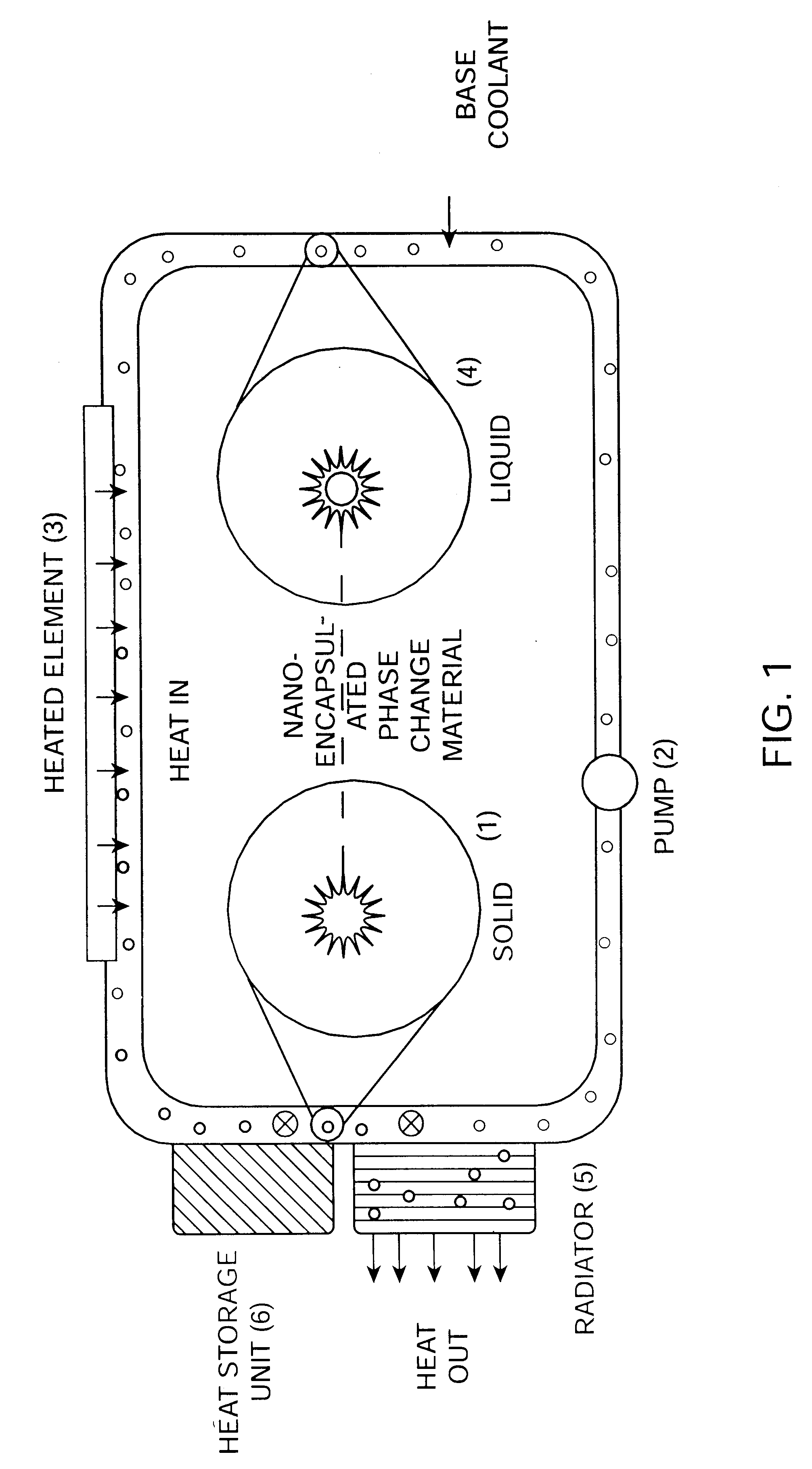Nanometer sized phase change materials for enhanced heat transfer fluid performance
a phase change material and heat transfer fluid technology, applied in the field of dielectric heat transfer fluid manufacturing, can solve the problems of poor thermal conductivity and heat capacity, fluids less desirable over the intended temperature range of application, and none of the materials tried in the prior art were able to reach an acceptable combination
- Summary
- Abstract
- Description
- Claims
- Application Information
AI Technical Summary
Benefits of technology
Problems solved by technology
Method used
Image
Examples
Embodiment Construction
In a preferred embodiment, the system to be cooled or heated is a stack of a proton exchange membrane (PEM) based fuel cell where the operating temperature is preferably within the range of between about 70.degree. C. and 100.degree. C., and more preferably is about 80.degree. C. at which temperature the electrochemical cell reactions take place. Therefore, the appropriate transformation temperature for phase change materials is selected about 80.degree. C. The operating temperature range can be adjusted by those ordinarily skilled in the art depending upon the particular PCM incorporated and its associated transition temperature.
Alternatively, the nano-PCM based coolants can be used in any flowing dielectric coolant system where transfer of a large or high heat load is required such as in power electronics or avionic or space based systems.
(A) Identification of the Appropriate PCMs and Preparation of Micelles
The list of acceptable PCM materials shown below in Table 1 comprises mate...
PUM
 Login to View More
Login to View More Abstract
Description
Claims
Application Information
 Login to View More
Login to View More - R&D
- Intellectual Property
- Life Sciences
- Materials
- Tech Scout
- Unparalleled Data Quality
- Higher Quality Content
- 60% Fewer Hallucinations
Browse by: Latest US Patents, China's latest patents, Technical Efficacy Thesaurus, Application Domain, Technology Topic, Popular Technical Reports.
© 2025 PatSnap. All rights reserved.Legal|Privacy policy|Modern Slavery Act Transparency Statement|Sitemap|About US| Contact US: help@patsnap.com


